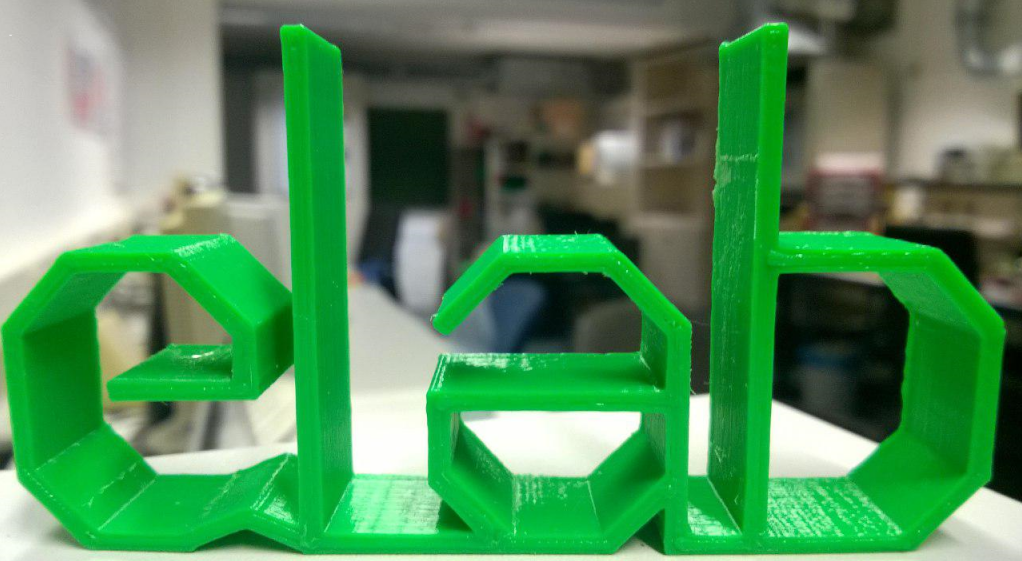1 Introduction
The laboratory regulations are intended to ensure safety and to guarantee an orderly process of the work to be done in the student electronics laboratory, hereinafter referred to as “eLab”. The laboratory regulations apply to the laboratory rooms in H-H 002. The rooms are subordinate to the Hölderlin branch workshop from Faculty IV and are administered by the student initiative eLab. Contact persons for the university staff and the student initiative can be found under point contact persons. The safety regulations apply to all persons working in the student initiative and to all persons who are in the laboratories. The safety regulations are to be understood as binding instructions for action in the sense of the safety rules of the Unfallkasse NRW. Before a person is allowed to carry out work in the laboratory, the persons are informed about the compliance with the regulations in the laboratory rules and must confirm this by their signature. The term “university employees” is further understood to mean persons who have signed a temporary or permanent employment contract with the university.
The term “authorized representatives” is used to refer to persons who have been authorized by the Board of Directors of the eLab initiative to issue directives. A list of all persons authorized to give instructions can be found in the entrance area of the laboratory.
2 General safety regulations and areas of application
Laboratory rooms are considered “electrical operating rooms” in the sense of the VDE regulations (DIN VDE 0100). Activities in the laboratory may therefore only be carried out after appropriate instruction. Work in the rooms of the eLaboratory is bound to the opening hours for students. Work outside these hours is possible by arrangement if the laboratory supervision is transferred from a person authorized to give instructions to a demonstrably instructed student and at least two persons are present in the laboratory. The regulations stated in these regulations may not be violated during this period either. Work on voltages higher than extra-low voltage is prohibited in the laboratory spaces. The university is not liable for personal and material damages that can be proven to have been caused by grossly negligent or intentional behavior. Claims for compensation against the university or the student initiative are excluded.
- Everyone is required to inform themselves about the location of fire extinguishers, first aid kits and other safety equipment.
- All safety instructions and measures must be followed or supported. Instructions contrary to safety must not be followed.
- Work in the designated laboratory rooms is only permitted after recorded instruction on the risks and rules of conduct in the corresponding areas.
- Persons not familiar with the laboratory and persons who have not been demonstrably instructed may enter the laboratory rooms only if accompanied by an authorized person. Special groups of persons, such as cleaning personnel or security staff, are also permitted access with reduced instruction at certain times (outside normal laboratory operating hours).
- Safety instruction for electronics laboratories must be provided by the student initiative safety officer and by handing out these laboratory regulations prior to starting work for the first time, and then followed up at least once a year.
- Prior to beginning work in laboratory areas, each university employee and student must confirm by written statement that he or she has received the laboratory regulations and has been instructed.
- Operating instructions posted on site must be observed.
- Knowledge of the rules listed in these laboratory regulations does not replace this instruction.
3 Rules for working on electrical and electronic systems
- Before switching on an electrical arrangement, every university employee or student must familiarize himself with its construction and operation, as well as with the operation of the equipment used. It is his or her special duty to be thoroughly informed about the possibilities of quickly shutting down the entire arrangement, i.e. the installation location of the “emergency stop pushbutton” must be known.
- Each university employee or student must observe the following safety rules when handling electrical equipment and systems:
- disconnect,
- secure against being switched on again,
- determine the absence of voltage,
- ground and short-circuit,
- cover or isolate adjacent live parts.
- Before using electrical equipment or systems, every university member or student must ensure that they are in apparently perfect condition.
- Each university member or student may only operate the switches and control devices intended for this purpose. No settings on safety equipment may be changed.
- As a general rule, no wet electrical equipment may be used and no wet electrical systems may be operated.
- In the event of malfunctions of devices or systems, their power supply must be switched off immediately.
- No person may make repairs to electrical equipment or systems unless he or she can demonstrate adequate knowledge of the hazards involved and how to operate them safely.
- Each university employee or student must inform himself/herself of the specific safety measures to be taken before using fixed and portable electrical equipment. These safety measures must be strictly adhered to. This applies in particular to use under special environmental conditions, such as extreme heat, cold, chemical influences or in areas subject to fire or explosion hazards.
- If it is found that equipment or aids are not in perfect working order in terms of safety, this defect must be reported immediately to the laboratory employee or authorized representative responsible for the device or system. The devices or equipment are not to be used further and are to be withdrawn from use by other persons. Dangers must be pointed out.
- Work must not be carried out on DC voltages above 60 V or AC voltages above 25 V, open devices, control cabinets or experimental setups with exposed mains supply connections, devices on which the protective measures against excessive contact voltages according to VDE 0100 are temporarily suspended due to dimensional requirements. The work is limited to work on devices according to VDE 0140-1 in the area of protective extra-low voltage and protection against contact can be dispensed with. Also for these circuits, any circuit modifications in a live structure are prohibited. Before intervening in such a circuit, the experimental setup must be disconnected from the operating voltage using the main switch provided for this purpose. Then the person who is going to intervene in the circuit must personally make sure that the circuit is de-energized. Non-insulated, live parts of circuits must not be touched under any circumstances when switched on.
- Electrical measuring instruments that have a ground connection must be properly grounded when in use. They must not be operated potential-free by means of an isolating transformer.
- The individual accident prevention regulations must be observed and can be viewed at the specialist for occupational safety.
Ralf Schmelzer
www.uni-siegen.de/zuv/dezernat1/sicherheit
Tel.: 0271/740 – 3311
4 Rules for working in the laboratory rooms
- The ventilation systems for supply air and exhaust air must be switched on when persons are present in the rooms and. When leaving the rooms, the ventilation systems must be switched off.
- The laboratory rooms and their equipment must be kept in order at all times; in particular, the power supply must be switched off at the end of work, the laboratory space must be cleaned up, the lights must be turned off, and the doors must be locked.
- Smoking and vaporizing are not permitted in the laboratory rooms. The consumption of food and beverages is not permitted inside the laboratory.
- Automatically operating systems that pose a potential hazard as defined by VDE regulations must not be left unattended.
5 General rules
- Before leaving the workplace, the experimental setups must be disconnected from the mains.
- Escape routes and emergency exits are marked and must not be blocked or obstructed. If the alarm signal continues, there is acute danger. In this case, the building is to be left immediately along the marked escape routes and the assembly point is to be visited (see appendix). If a fire is discovered, the ZLT (2111) is to be informed. If possible, people present in the laboratories are to be informed. The building is to be left on the marked escape routes and the assembly point is to be visited. The instructions of the fire department must be followed.
- Existing warning and information signs must generally be observed.
6 Computers, devices, tools
- Computers, equipment and tools must be handled with care. Damage to these must be reported immediately to the supervisor or instruction officer responsible for the laboratory. The user is fully liable for damages caused by gross negligence or intent.
- After use, all equipment and tools should be returned to their original place. All exceptions must be discussed and approved by an authorized person.
- Installing or uninstalling software on laboratory and workstation computers is prohibited unless agreed upon with the person authorized to give instructions.
- All computers operated in the university network are constantly at risk of attack. The operating system and the virus protection used require constant maintenance. If externally created files are further processed at the university, they must be checked with an up-to-date scanner beforehand. Files attached to e-mails may only be opened in particularly justified exceptions and after prior checking. Because of the increased risk, HTML-formatted emails are to be avoided.
7 Components, material and orders
- All material is to be handled with care and used in such a way that no unnecessary waste is produced.
- When using electrical, electromechanical or electronic components, it is essential to observe their characteristics in order to avoid destroying the components.
- All unused components and materials must be returned to their storage places.
8 Safety-relevant facilities
- Fire extinguisher is located next to the entrance door of the laboratory.
- First aid kit is located next to the entrance door of the lab.
- The assembly point is located in the parking lot in front of the university building (see attached map).
- Person in charge of the laboratory
Management of the faculty
Dr.-Ing. Bernd Klose
Room: H-F 003
Phone: 0271/740 – 4466 - Organizational management for the lab rooms
student initiative eLab
Room: H-H 002
Tel.: 0271/740 – 4367
Email: info(at)elab-siegen.de
The list of board members and contact persons is posted in the entrance area of the lab. - First aiders: A list of first aiders and emergency numbers is posted in the entrance area of the lab.


